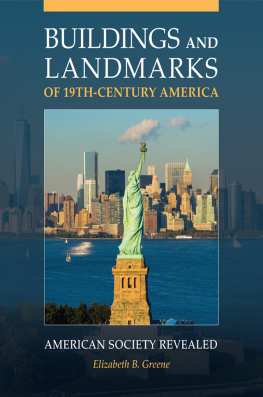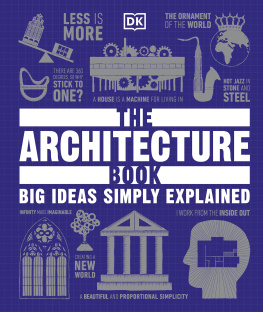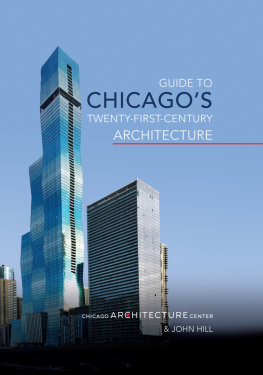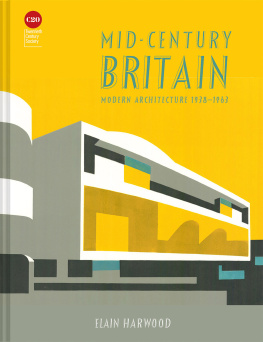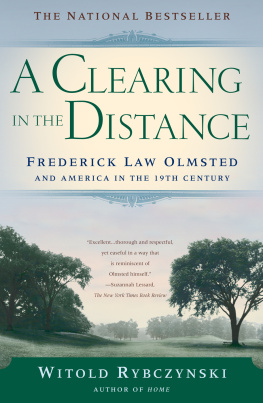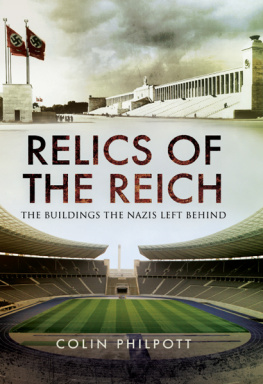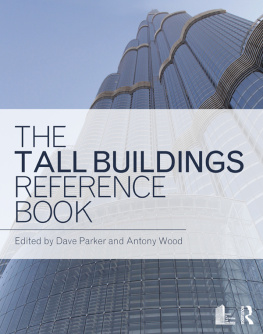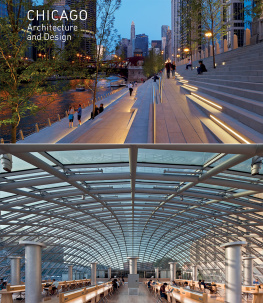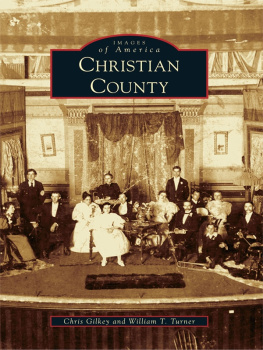BUILDINGS AND
LANDMARKS OF
19TH-CENTURY
AMERICA
BUILDINGS AND LANDMARKS OF 19TH-CENTURY AMERICA
AMERICAN SOCIETY REVEALED
Elizabeth B. Greene
Copyright 2017 by ABC-CLIO, LLC
All rights reserved. No part of this publication may be reproduced, stored in a retrieval system, or transmitted, in any form or by any means, electronic, mechanical, photocopying, recording, or otherwise, except for the inclusion of brief quotations in a review, without prior permission in writing from the publisher.
Library of Congress Cataloging-in-Publication Data
Names: Greene, Elizabeth B., author.
Title: Buildings and landmarks of 19th-century America: American society revealed / Elizabeth B. Greene.
Description: Santa Barbara, California: Greenwood, an Imprint of ABC-CLIO, LLC, 2017. | Includes bibliographical references and index.
Identifiers: LCCN 2016054222 (print) | LCCN 2017014334 (ebook) | ISBN 9781440835728 (alk. paper) | ISBN 9781440835735 (ebook)
Subjects: LCSH: ArchitectureUnited StatesHistory19th century. | Historic buildingsUnited StatesHistory19th century. | Architecture and societyUnited StatesHistory19th century.
Classification: LCC NA710 (ebook) | LCC NA710 .G74 2017 (print) | DDC 720.973/09034dc23
LC record available at https://lccn.loc.gov/2016054222
ISBN: 978-1-4408-3572-8
EISBN: 978-1-4408-3573-5
21 20 19 18 17 1 2 3 4 5
This book is also available as an eBook.
Greenwood
An Imprint of ABC-CLIO, LLC
ABC-CLIO, LLC
130 Cremona Drive, P.O. Box 1911
Santa Barbara, California 93116-1911
www.abc-clio.com
This book is printed on acid-free paper 
Manufactured in the United States of America
Contents
This volume, Buildings and Landmarks of 19th-Century America: American Society Revealed , examines 45 separate buildings and landmarks in the United States. These structures span the entire century and the entire breadth of the nation as it continued to expand westward. At the birth of the 19th century, the United States consisted of a handful of states stretching along the eastern coast from Massachusetts (which included Maine at the time) to Georgia. Although Kentucky and Tennessee had recently become states, Florida and the Louisiana Territory (which included the Great Plains states up to Canada) were still owned by Spain. The Midwestern states west of New York and Pennsylvania were known as the Northwest Territories, and they were still frontier country. By the end of this historic century, the nation spanned from the Atlantic coast to the Pacific coast. In its bid for manifest destiny, the United States extended all the way to California. There were a handful of states that entered the Union after 1900, and they included Alaska and Hawaii. But both Alaska and Hawaii were already territories of the United States by 1900. In 100 years, the countrys land mass had more than tripled, and its population had grown more than tenfold.
Any discussion of buildings and landmarks of the United States in the 19th century is sure to reveal the transformations that occurred over the course of that momentous 100 years. Great buildings were built on the East Coast at the dawn of the century, like the Capitol Building and the White House in Washington, D.C. Meanwhile, settlers of the Great Plains were still building houses constructed out of sod at the end of the same century, as can be seen in the Dowse Sod House in Nebraska. With the Industrial Revolution came a reaction to its effects. Numerous religious sects were born during the first half of the century, many of them setting off into the frontier to create their own utopian societies. Architectural styles on the East Coast may have stuck to the tried and true, but in burgeoning Chicago, a completely new style was born after a devastating fire destroyed most of the city. While cities were becoming ever more congested, housing conditions spiraled downward for the swelling immigrant population. Reformers of various types looked for ways to accommodate them, often including moral lessons in the package. A rural cemetery built in Massachusetts in the early 19th century became the prime influence on public park design and led to the construction of New Yorks Central Park. The millionaire industrialist and philanthropist Andrew Carnegie built many of the first free public libraries in the country, which led to the development of municipal public library systems. The huge success of 19th-century worlds fairs, like the 1876 Centennial Exhibition and the 1893 Worlds Columbian Exposition, had lasting effects on society through the many new products that they introduced to the public. Throughout the book, buildings and landmarks are analyzed to elucidate their influence on many aspects of 19th-century society, including the treatment of the mentally ill, impact of religious revivals, growth of leisure and vacation time, and housing for the poor and the western homesteader. The book is organized in chronological order within five categories: Civic Architecture, Commercial Architecture, Domestic Architecture, Fortifications, and Religious and Funerary Architecture . The Civic Architecture category comprises buildings and landmarks that promote civic life, and they include government buildings, bridges and canals, museums, educational and other institutions, and buildings from worlds fairs. The Commercial Architecture category comprises buildings and landmarks that are built for a commercial interest such as department stores, office buildings, factories, and entertainment venues. The Domestic Architecture category comprises all types of dwellings, whether single-family or multiple dwellings, and they range from the simplest of frontier homes to the mansions of the Gilded Age. The Fortifications category deals specifically with forts built by the U.S. military. The Religious and Funerary Architecture category comprises buildings and landmarks that include both churches and cemeteries and also landmarks from utopian communities that were founded by religious leaders.
Let me begin by thanking my steadfast editor Michael Millman at ABC-CLIO for his ongoing support of this project. His suggestions were always right on the money and he was unfailingly obliging. Allison Nadeau was consistently accommodating in her search for appropriate images, which were not always easy to find. Most of all, I would like to thank my husband George who has been unwavering in his support during the many, many weekends that I was holed up in my home office. He reliably reviewed all the work, giving his sensible comments, which never led me down the wrong path. My son Chris has been stalwart in his support of all my literary efforts. My brother Chris, with his encyclopedic knowledge, has been a font of ideas for the book, as well as a contributor to some early research. Thanks to all, and please accept my sincere gratitude and appreciation.
The sovereign nation of the United States has had only two full centuries in its short historythe 19th and the 20th. The 20th century recently came to a close, so it is familiar to contemporary Americans. But at the other end of the timeline, when the 19th century began, the infant nation was still trying to figure out where it was going and how it was going to get there. It had few buildings and fewer landmarks. In fact, in 1800 the nations capital, a hot, marshy, mosquito-ridden backwater between Virginia and Maryland, was far from being a tourist destination. Its Capitol Building was unfinished, and remained so for years. Even its executive mansion, which would eventually be officially named the White House, was woefully incomplete, though it was occupied by President Adams and his disgruntled family in the first year of the 19th century. The countrys third president and one of its most influential, Thomas Jefferson, was not in favor of expanding the federal government, and cut federal spending and the size of the military, which did not help in the completion of the capitals construction projects. His political philosophy, as distinct from the Federalists, supported the growth of a rural, agrarian nation, populated by educated, middle-class yeoman farmers and slave-holding plantation owners like himself. The Federalist Party, headed by Alexander Hamilton, supported a strong national government and a national bank. The Federalists were often Northerners and city-dwellers. Thomas Jefferson did, however, advocate for the expansion of the country westward in order to promote his notion of democracy across the continent. His momentous act of 1803, the Louisiana Purchase, more than doubled the land mass of the country. It would be one of the most consequential achievements of the century. Jefferson sent out the team of Meriwether Lewis and William Clark to survey and document the enormous swath of land that he purchased from France. Lewis and Clark and their Corps of Discovery made the arduous journey all the way to Oregon, and returned with a treasure trove of data about the mysterious land and its Native American residents, its plants, its animals, and its geography.

